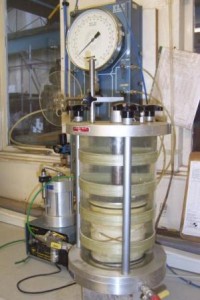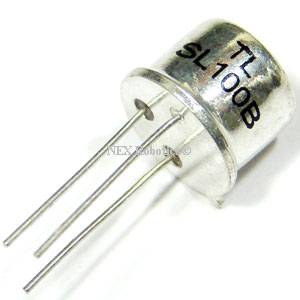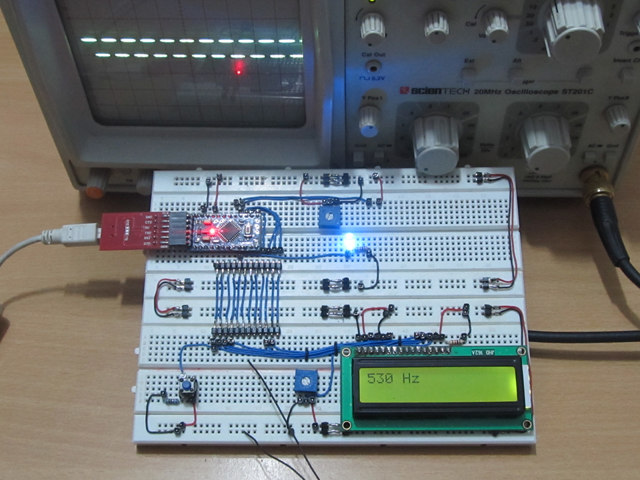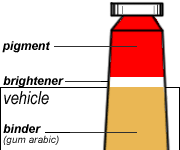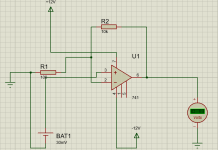Permeability Test
Initially a predetermined amount of molding sand is being kept in a standard cylindrical tube, and the molding sand is compressed using slightly tapered standard ram till the cylindrical standard sand specimen having 50.8mm diameter with 50.8 mm height is made and it is then extracted. This specimen is used for testing the permeability or porosity of molding and the core sand. This test is applied for testing porosity of the standard sand specimen. The test is performed in a permeability meter consisting of the balanced tank, water tank, nozzle, adjusting lever, nose piece for fixing sand specimen and a manometer. A typical permeability meter is shown in Fig. which permits to read the permeability directly. The permeability test apparatus comprises of a cylinder and another concentric cylinder inside the outer cylinder and the space between the two concentric cylinders is filled with water. A bell having a diameter larger than that of the inner cylinder but smaller than that of outer cylinder, rests on the surface of water. Standard sand specimen of 5.08 mm diameter and 50.8 mm height together with ram tube is placed on the tapered nose piece of the permeability meter. The bell is allowed to sink under its own weight by the help of multi-position cock. In this way the air of the bell streams through the nozzle of nosepiece and the permeability is directly measured.
Permeability is volume of air (in cm3) passing through a sand specimen of 1 cm2 crosssectional area and 1 cm height, at a pressure difference of 1 gm/cm2 in one minute. In general, permeability is expressed as a number and can be calculated from the relation
P = vh/pat
Where, P = permeability
v = volume of air passing through the specimen in c.c.
h = height of specimen in cm
p = pressure of air in gm/cm2
a = cross-sectional area of the specimen in cm2
t = time in minutes.
For A.F S. standard permeability meter, 2000 cc of air is passed through a sand specimen (5.08 cm in height and 20.268 sq. cm. in cross-sectional area) at a pressure of 10 gms/cm2 and the total time measured is 10 seconds = 1/6 min. Then the permeability is calculated using the relationship as given as under.
P = (2000 × 5.08) / (10 × 20.268 × (1/6)) = 300.66 App.
Copied from A Textbook of a Basic Manufacturing Processes and Workshop Technology by Rajender Singh.


